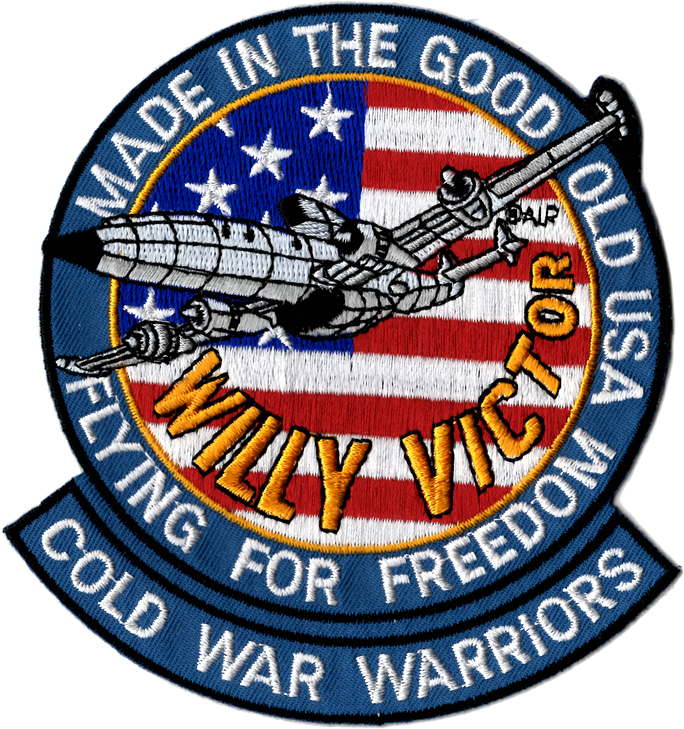I joined the Navy in Oct 1954 in my hometown of Richmond, VA. After completing AT(A) School in Memphis and AN/APS-45 Radar training at Biloxi, MS, I reported to VW-12 on July 10, 1956, ten days after commissioning and over a year before the first barrier flights. I flew with three crews. I was 2nd Tech on Crew 7, the “celebrity” crew with AT3 Dean Martin, AL1 John D. Rockafellow, and a bonafide WWII ace as plane commander. As 2nd Tech in Crew 9, we were assigned an aircraft to both maintain and fly verification/calibration flights with the DERs out of Pearl Harbor. Most of my barrier flights were as 1st Tech with Giffen’s Rangers of Crew 11, so named because our PC, Cdr Giffen, was active in local rodeos. My wife, Helen, gave birth to our first of four sons while I was in VW-12. My tour was over in Sept 1958, and I was separated as an AT1at Long Beach in Oct 1958. It was at the end of a recession and jobs were tough to find, so I ended up in the same boring job that I had before enlisting. An offer from RCA Service Co at Cape Canaveral was tempting, but I elected to reenlist. If I had not had the pleasant experience of duty in VW-12 or been an AT1, I’m not sure I would have elected the Navy, but I have never regretted doing so. I attended AT(B) School in Memphis and was then ordered to instructor duty. I was fortunate to be assigned to the Advanced Avionics Course, AV(B). After attending classes at the Electronics Technical Officers Course, a group of us wrote the curriculum and lesson guides and taught the math and physics sections of that school. That group (5 AT1s and an AT2) was the most intelligent, dedicated and cooperative group that I ever experienced in my entire career. This tour awakened a thirst for education and I started attending night classes. It was in Memphis, also, that my wife gave birth to our other three sons. After 4 years in AV(B), I was assigned to NAMTD Oceana, where I taught the A6A Integrated Weapons System. Since this course required access to several training devices it was taught at night, allowing me to take day classes at Old Dominion College. After selection to WO1 in January 1963, I received orders to VAW-12 in Norfolk, where I was one of the most junior of 275 officers. Again I was fortunate and was assigned to Night Check Maintenance, which not only broadened my experience beyond avionics but also allowed me to continue day college classes. In 1968 I was selected to both LDO and a program to attend college full time. In 1969 I earned a BS in Physics from ODC (now ODU). My first fleet assignment as a Commissioned Officer was as Maintenance/Material Control Officer in an A6 squadron, VA-85, where I was designated an Aviation Maintenance Duty Officer. In 1972 I was ordered to the staff of COMNAVAIRLANT where I was an Avionics Support Equipment Officer and Force Project Officer for VAST, the first generation fully Automated Test Equipment (ATE). My ATE experience got me orders to the Aircraft intermediate Maintenance Department in USS John F. Kennedy, was due to deploy as the first activity, ashore or afloat, to support the F-14, E2C, S3B, and the new INS system at the same time on VAST. Here I was at first Avionics Division Officer and then Production Control Officer. In my 36 months aboard “Super K” she spent 24 months with blue water under the hull and won 2 Battle Efficiency E’s. In 1978 I received orders to VQ-2 at Rota, Spain as Assistant MO. This was, at the same time, one of my most enjoyable and the least rewarding tour in my career. My penalty for requesting early transfer from VQ-2 was to be condemned to Washington, where I was assigned to Naval Air Systems Command in the office of the Program Manager for F/A-18A, which was just starting its Production Phase. Here I was Deputy Program Manager for Fleet Support and ATE Liaison. After about six months I was dual hatted with the same titles in the Engineering Class Desk as well as assuming the Configuration Control duties. This was probably my most rewarding tour, because I was involved with cutting edge technology, helped solve many fleet problems, and was able to use my technical education to help solve several engineering problems with the contractor. In 1984 I attended the Defense Systems Management College at Ft Belvoir, VA and then reported to the Naval Sea Systems Command as the Aviation Assistant to the Ship’s Logistics Manager for Carriers. This desk was responsible for all rework and modifications for all active carriers, and my responsibility was anything related to aviation. This included shop spaces layout and equipment installation, primary flight control (pri-fly), catapults and arresting gear, and other sundry things such as the LSO platform and jet engine storage. Again, my technical background came in handy. In June 1986, after 31.5 years on active duty, I retired as Commander, stayed in Northern Virginia, and took a job with a so-called Beltway Bandit, a company that held support contracts with the DoD and other government agencies. In support of Navy Activities, I was involved in space satellite programs for (1) Remote Oceanographic and Meteorologic Sensing and (2) Satellite Laser Communications (very interesting ), fiber optics, photonic sensors, electromagnetic environmental effects, and finally full circle to the F/A-18 Program Office. When NAVAIR moved to Pax River in mid-1997 I drove the 160-mile round trip twice a week for about three months, and then I had enough and retired the day after Thanksgiving 1997. Since then, my wife Helen and I have been traveling, spending time with our 11 grandchildren, taking care of two houses, and spending a lot of time on the Internet, seeking old acquaintances among other
